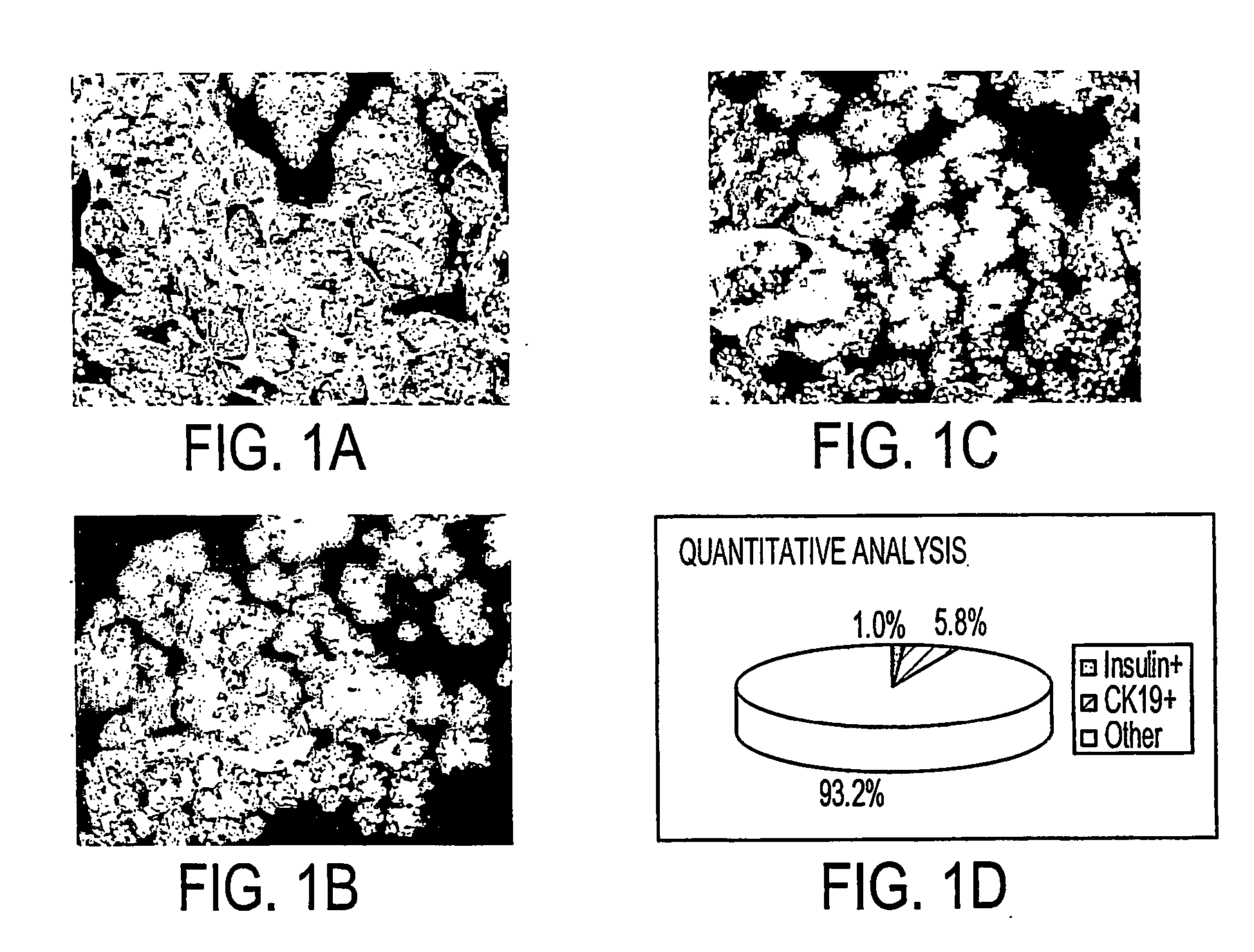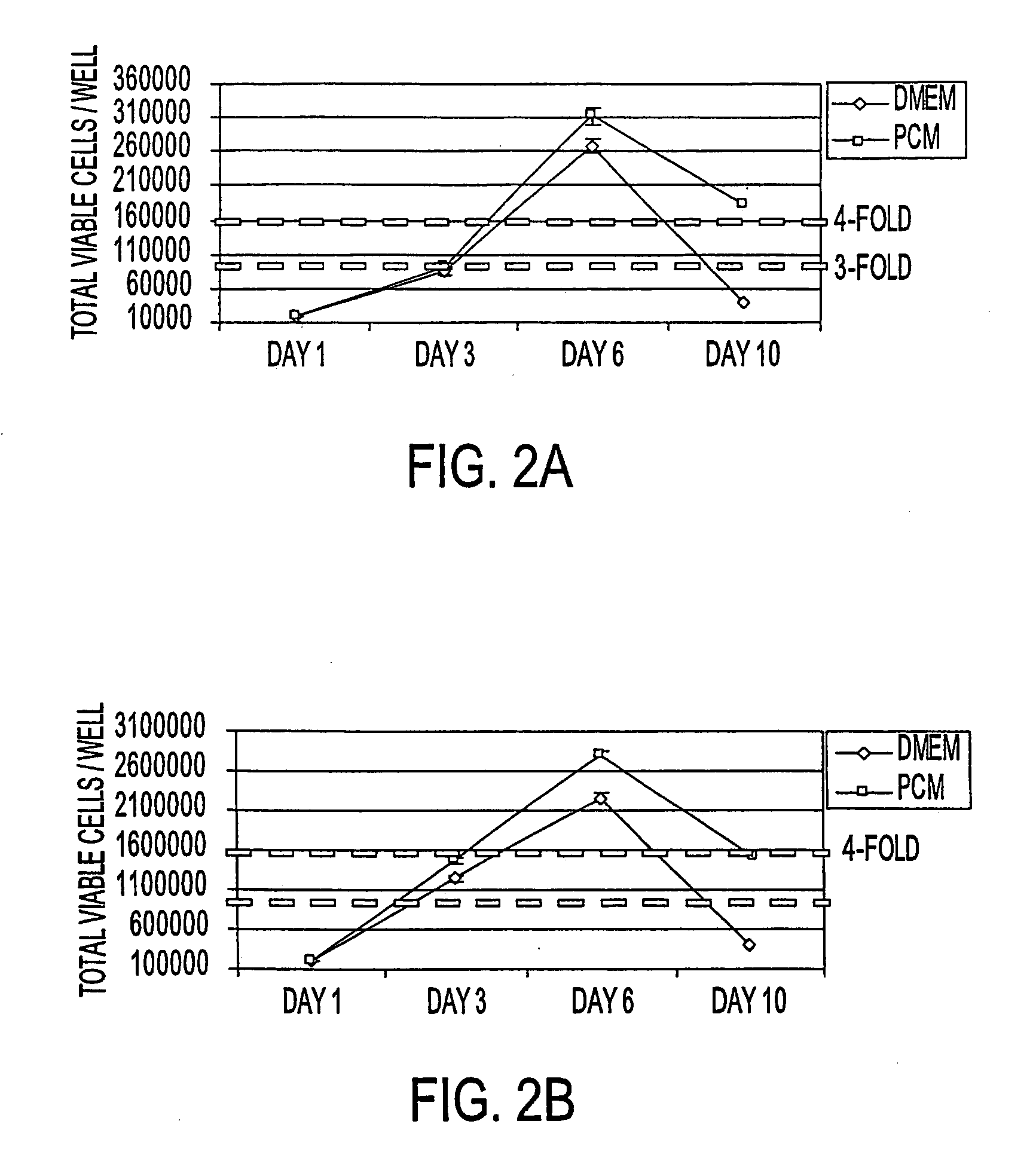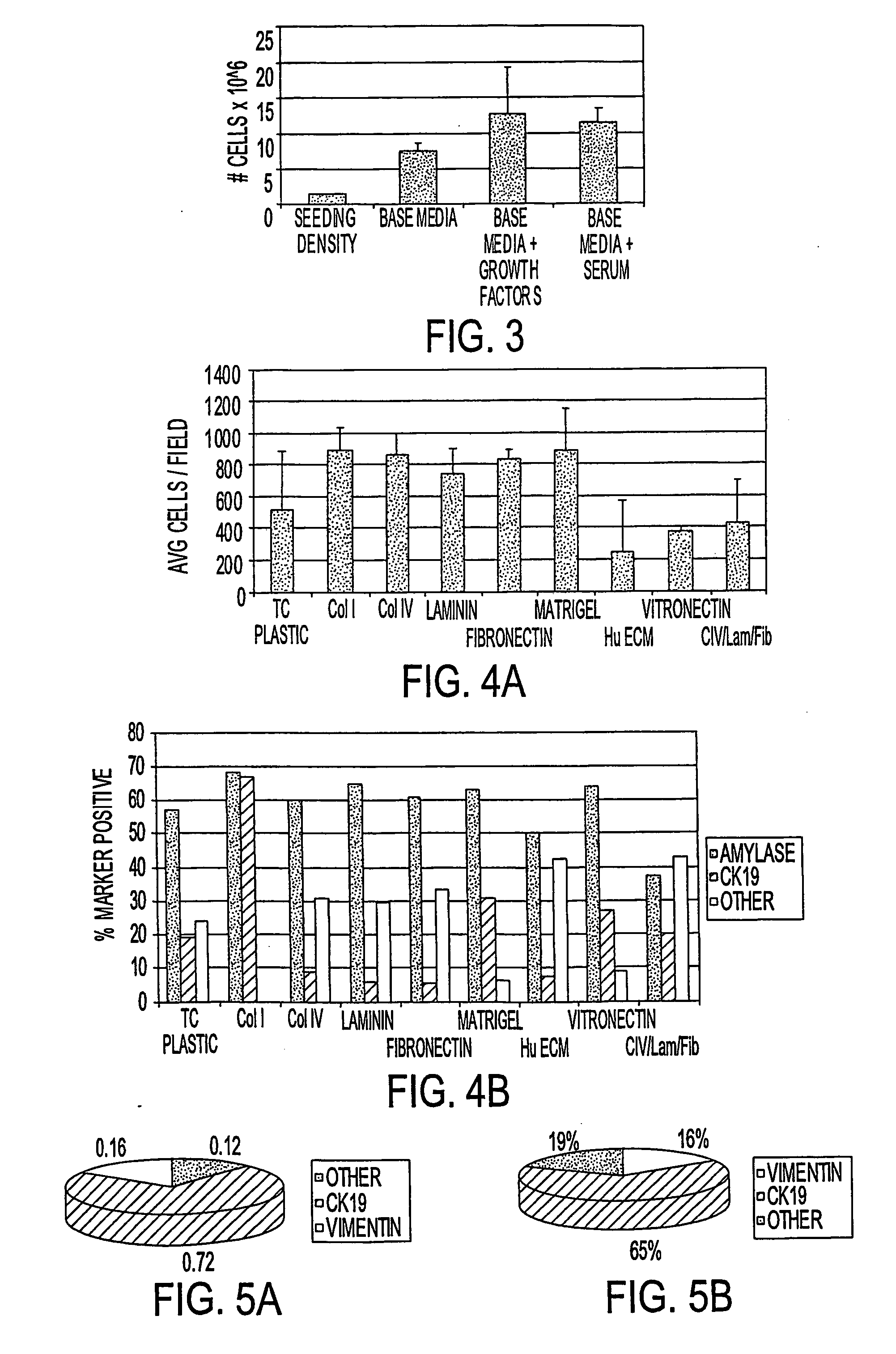Methods for in vitro expansion and transdifferentiation of human pancreatic acinar cells into insulin-producing cells
a technology of pancreatic acinar cells and in vitro expansion, which is applied in the direction of gastrins/cholecystokinins, drug compositions, metabolic disorders, etc., can solve the problems of not being able to obtain insulin-producing cells in good numbers, relative rarity of stem-like cells that can be harnessed, etc., to achieve superior cell attachment, increase the number of cells, and enhance culture efficiency
- Summary
- Abstract
- Description
- Claims
- Application Information
AI Technical Summary
Benefits of technology
Problems solved by technology
Method used
Image
Examples
example 1
Characterization of Cell Culture Conditions
A. Serum-Free Medium
[0080] Freshly isolated primary human pancreatic cells were collected as a pellet from a COBE cell separator, fixed in formalin, paraffin-embedded, sectioned, and analyzed with antibodies to amylase, CK19, and Insulin. Images (FIGS. 1A and 1B) were collected on a Universal Imaging System (Universal Imaging Corporation) and analyzed with MetaMorph Software. This cell pellet (FIG. 1C) was comprised of 1.0% insulin+ cells (beta cells of the islet), 5.8% CK19+ cells (primary ductal cells), and 93.2% amylase+ and unlabeled (acinar cells and other cell types).
[0081] Primary human pancreatic cells were then seeded at 104 or 105 cells / cm2 onto tissue culture treated polystyrene in either DMEM commercial medium plus 10% fetal bovine serum or in PCM plus 10% fetal bovine serum. Replicate cultures were harvested at 3 day intervals via trypsinization and live cells (as determined by trypan blue exclusion) and enumerated on a hem...
example 2
Further Studies with ECM Surfaces and Various Media Components
[0084] Primary pancreatic cells, composed of >90% non-islet / non-duct cells, were plated onto various coated surfaces at a density of 28,900 cells / well (105 cells / cm2). Unattached cells were washed off after 18 hours, and cultures were re-fed and allowed to grow for 8 days. Cultures were fixed in formalin (10%) and subjected to phenotypic analysis with antibodies to CK19 and Amylase. The results are shown in FIG. 4A-B. While Collagens I, IV, Laminin, Fibronectin, and Matrigel provide a suitable surface for cell attachment and expansion, maintenance of acinar (amylase+) phenotype along with the presence of an increased proportion of cells with a glandular epithelial phenotype (CK19+) was superior on Collagen I. More than 50% of cells analyzed expressed amylase and more than 50% of cells analyzed expressed CK19, suggesting that a subpopulation of cells in these experimental conditions express both markers.
[0085] Tissue cul...
example 3
Density of Cell Seeding
[0086] Primary pancreatic cells were seeded at (3) densities on tissue-culture treated polystyrene dishes (60 mm) and fed with PCM. Light microcopic observations were made daily. At the 24-hour timepoint, dishes were sacrificed and stained with trypan blue to assess viability. The results are shown in Table 3.
TABLE 3SeedingAfter 3 daysDensityAt 24 Hours:At 48 Hours:Growth:104 cells / cm2Most cells attached,Mitotic Figures presentEpithelialtrypan blue negative(light microscopy)monolayer(live)forming105 cells / cm2Most cells attached,Mitotic Figures presentEpithelialtrypan blue negative(light microscopy)monolayer(live)forming106 cells / cm2Some cells attached,Few Mitotic FiguresCells aremost are trypan bluepresent (lightdetached;positive (dead)microscopy)somefibroblastspresent
PUM
| Property | Measurement | Unit |
|---|---|---|
| concentration | aaaaa | aaaaa |
| concentration | aaaaa | aaaaa |
| concentration | aaaaa | aaaaa |
Abstract
Description
Claims
Application Information
 Login to View More
Login to View More - R&D
- Intellectual Property
- Life Sciences
- Materials
- Tech Scout
- Unparalleled Data Quality
- Higher Quality Content
- 60% Fewer Hallucinations
Browse by: Latest US Patents, China's latest patents, Technical Efficacy Thesaurus, Application Domain, Technology Topic, Popular Technical Reports.
© 2025 PatSnap. All rights reserved.Legal|Privacy policy|Modern Slavery Act Transparency Statement|Sitemap|About US| Contact US: help@patsnap.com



